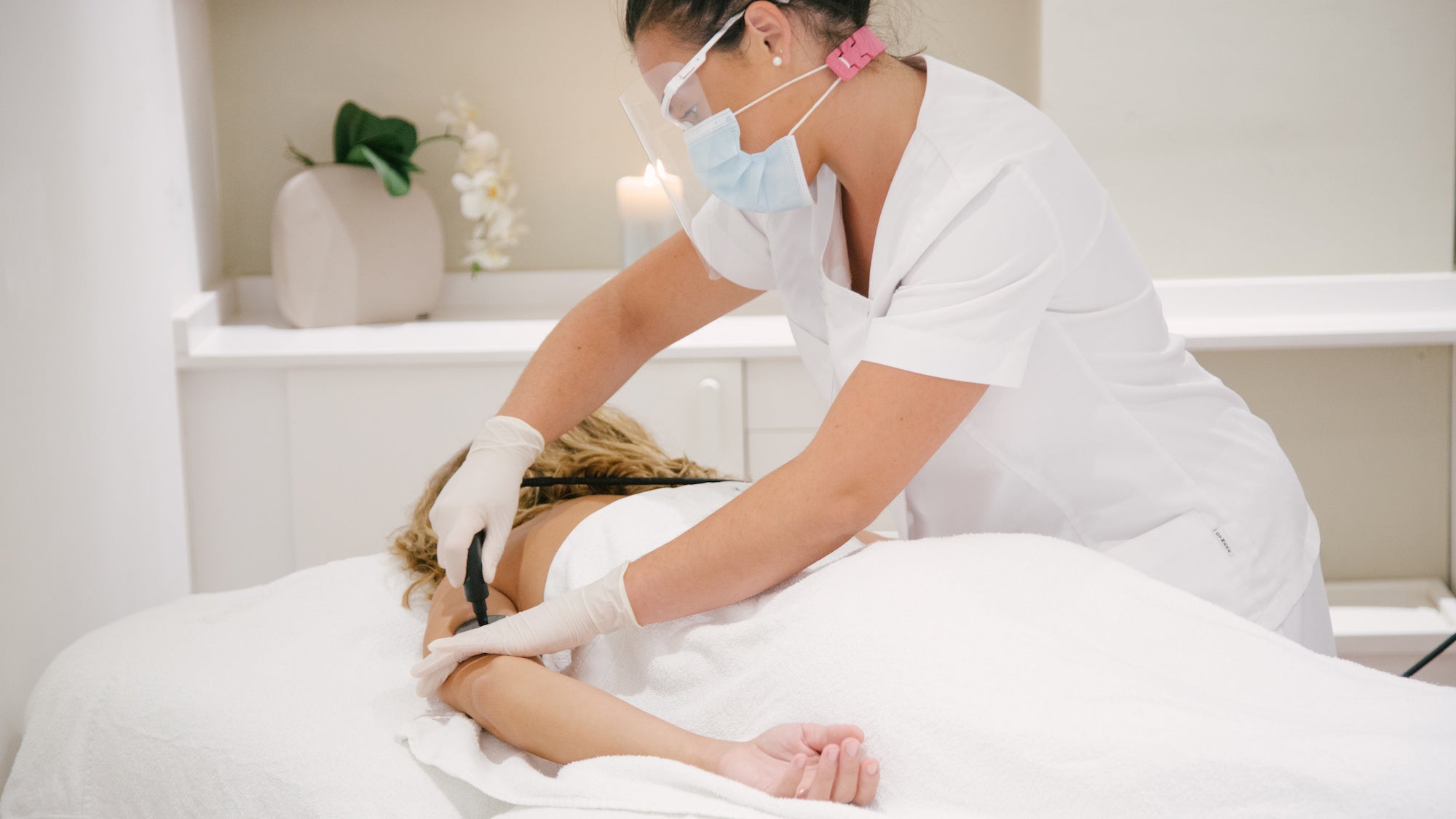
New Safety Protocols For 2020 Cosmetic Appointments During COVID-19
With a pandemic still threatening our livelihood, many things have changed, including the world of plastic surgery and cosmetic treatments.
To gauge the scene, we spoke to a few Oxygenetix sales experts for their first-hand experience in their respective markets. Although many of their encounters with accounts have switched to virtual, most have had a chance to see their offices in recent weeks. Here's what we found out.
What To Expect For Your Appointment
Plastic surgeons and skincare professionals have gone to great lengths to ensure the safety of their clients during this time. Appointments work differently now with more stringent screening processes and safety protocols.
Before Your Appointment
Prior to setting foot in the door of your plastic surgeon's office, you may be required to complete some tasks from home.
Laura Hunnewell from Chicago informed us, that there is an "emphasis on control of who is coming and going in offices and screening protocols."
The American Society of Plastic Surgeons (ASPS) councils medical professionals to screen patients 1-2 weeks in advance and advise the patient to self-quarantine until their scheduled appointment. You may even be required to have a pre-op PCR test (a nasal swab test for COVID-19) at least 5 business days before your procedure.
Before you go in for your scheduled appointment, you will most likely be asked to complete paperwork online or fax it to the office.
COVID Questionaire
You may get a phone call from the practitioner's office prior to your visit asking you to complete a COVID questionnaire, or you may need to fill one out upon arrival.
Here is a list of sample questions from ASPS that you may be asked:
Have you or anyone in your household. . .
- Been tested for COVID-19?
- Had any of the following symptoms in the past 21 days?: sore throat, cough, chills, body aches, shortness of breath, loss of smell, loss of taste, fever at or greater than 100º
- Visited or received treatment in a hospital, nursing home, long-term care, or other health care facility in the past 30 days
- Traveled within the US or on a cruise ship in the last 21 days
- Cared for an individual who is in quarantine, presumptive positive or tested positive for COVID-19
- A healthcare provider or emergency responder
When You Arrive
The check-in process for your appointment may differ depending on your area and how the office chooses to comply with CDC guidelines.
For example, Jill Haynes from Sacramento/ SF area shares, "For safety protocols, you wait in your car to be called in" and all patients must be wearing a mask.
You may recall the good old days going into your practitioner's office. After being warmly welcomed by staff, you take a seat in the lobby next to fellow patients. Perhaps you pick up a magazine or you are offered a drink as you wait.
The vibe is much different than what you are used to according to Paula Lillie in New York. "No one is in the waiting area, no literature or marketing material is put out."
Paula goes on to say that her clinics, "have signs with protocols for clients and post lists of how they are keeping staff and clients safe in regard to sanitation." She describes the offices as feeling eerie, sterile, and empty. It all starts with your temperature being taken and completing a COVID questionnaire if you haven't already.
The ASPS has set guidelines for medical practitioners to abide by during the pandemic. Here is their advice set forth in their guide, Tips for Getting Back to Practice:
- Encourage patients to use online portals, mail, or fax to complete all paperwork prior to arrival
- Reduce in-office staff by having anyone who can work remotely
- Assign frequent cleaning responsibilities
- Reduce or eliminate office visitors such as reps, students, or observers
- Ensure proper donning and doffing of PPE and proper hand-washing
- Have patients call when they arrive and wait in their car until they are ready to be screened
- Ensure cleaning products include: 70-90% isopropyl alcohol or 60-70% ethanol
Safety During Your Procedure
ASPS has set forth considerations regardless of the procedure you are having, that everyone entering a health care facility must be wearing a mask. Staff must wear surgical masks in all clinical areas, while patients may wear either cloth masks or surgical masks. Additionally, eye protection must be worn upon entry to the patient room or care area.

Clinic Procedure Protocol
Orange County rep, Ashton Leavitte, has noticed the "focus has transitioned more into maintenance/ preventative than repair" procedures.
For these clinic procedures such as injectables, peels, micro-needling, or aesthetic facial device services:
- Universal masking (N95 or other FDA/NiOSH approved) and eye protection/face shield (patient masked as feasible)
- Gowns and gloves are dependent on the degree of anticipated contact
Elective Surgeries Protocol
For surgery or procedures involving instrumentation in the head and neck area, or any procedure that may "lead to the aerosolization of viral particles", N95 masks or other FDA/NiOSH approved equivalent and eye protection, gowns and gloves, should be used.
In Conclusion
Medical and cosmetic professionals are doing everything in their power to keep you safe from the threat of coronavirus. By abiding by CDC guidelines, your practitioner's office is safer to visit than ever before. Although things may look and feel different, you can still achieve the outcomes you want as offices open back up.
Upcoming article: Plastic Surgery Trends 2020



Dejar un comentario
Este sitio está protegido por hCaptcha y se aplican la Política de privacidad de hCaptcha y los Términos del servicio.